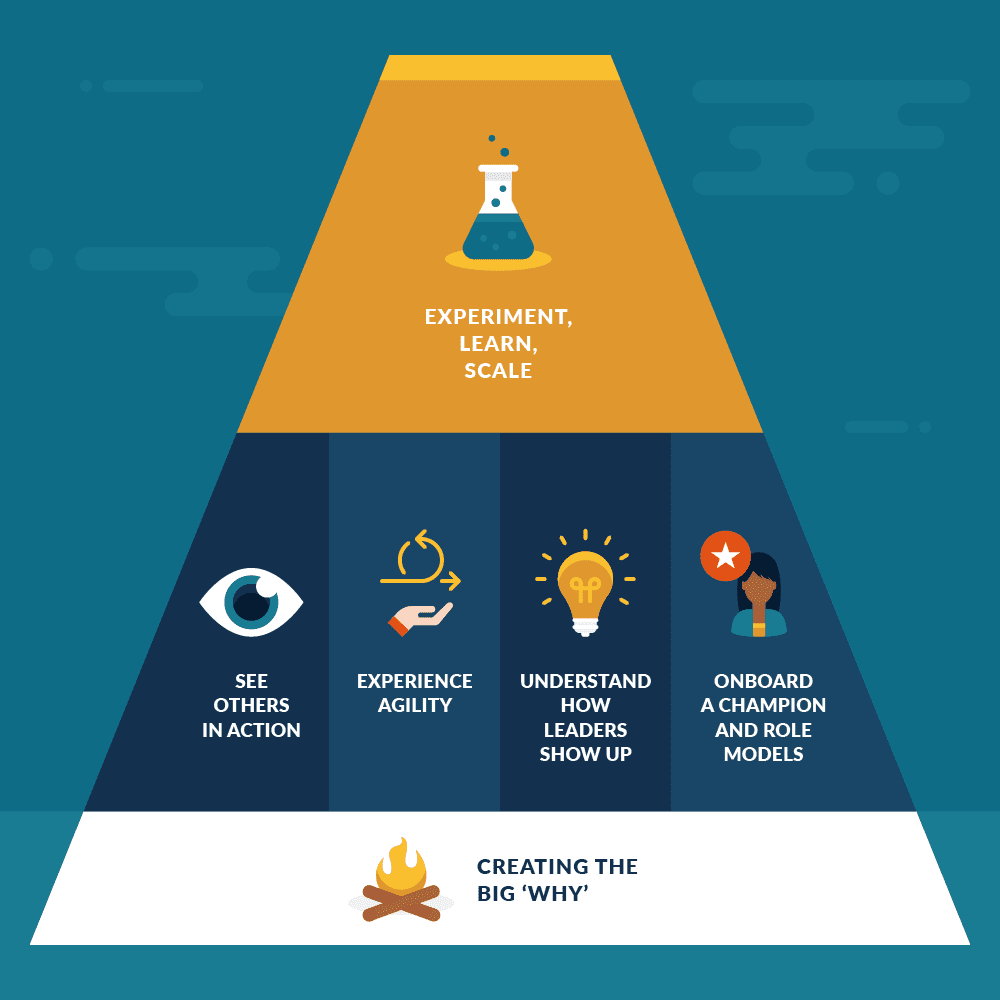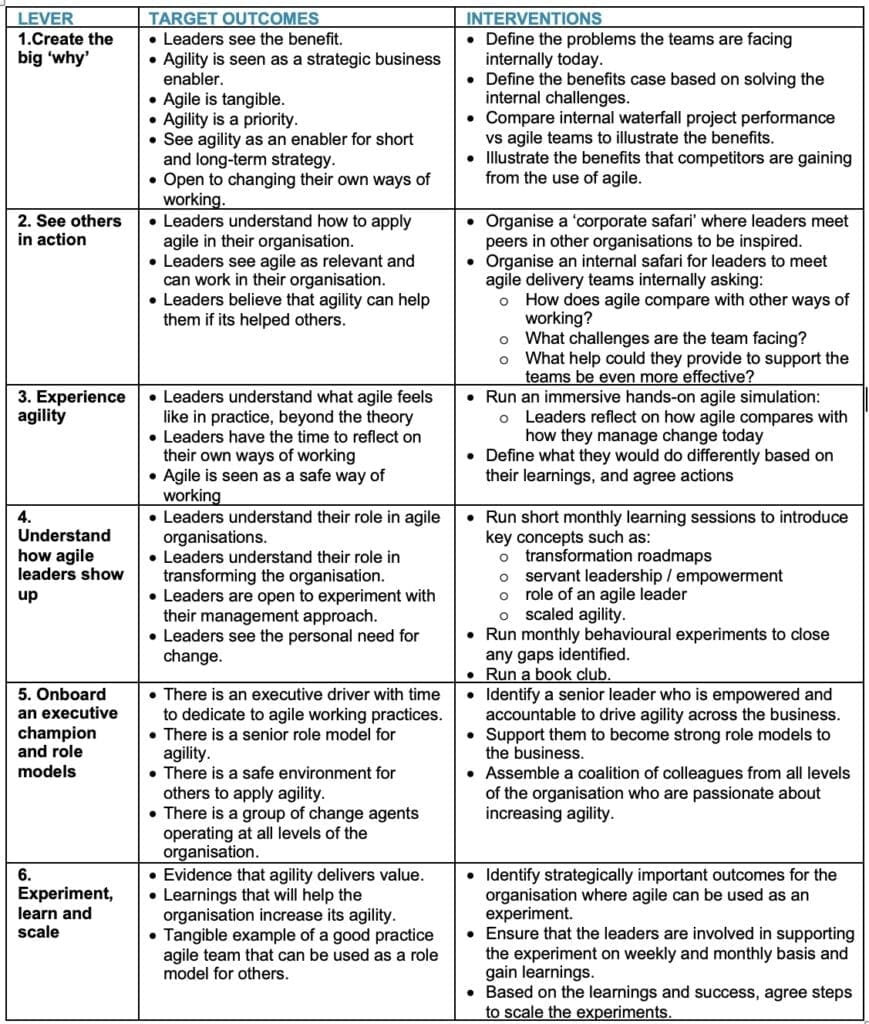ENGAGING LEADERS TO LEAD AN AGILE TRANSFORMATION
JCURV PERSPECTIVES
To deliver a successful and sustainable agile transformation in any business and the promised  improvement in performance it’s essential to have the backing of senior executives. However, many leaders are failing to champion agile working resulting in the failure of their agile projects.
Our recent discussion hosted by the Agile Business Consortium, neuro-tech platform Truthsayers, with a senior executive in the insurance industry, we explored how to increase senior leaders engagement with agile ways of working. Watch the video of the discussion here.
Why is it important to get leaders leading in agile?
Leaders play a key role in ensuring that agile methodology is effectively adopted in organisations and realising the financial and cultural value of change. So why do transformations fail?
VersionOne’s State of Agile report 2020 identifies the top three causes of failure as:
- culture
- resistance to change and
- lack of management support.
Leaders are ultimately accountable for addressing these issues.
So what makes an ideal agile leader?
First off, a successful leader supports a move to agile working and demonstrates agile leadership traits, acting as a role model in their organisation. Leading by example makes it safe for other employees to apply these, in some cases radically different, ways of working. They also set the strategic direction, prioritising areas of focus, but supporting their teams and tackling any barriers at both enterprise and team level.
In our 2020 State of Agile Culture report, we found that organisations with a strong agile culture outperform those that don’t by 235%. We also found that a lack of leadership awareness, understanding and support was the main barrier to strengthening an organisation’s agile culture.
Figure 1: What’s the biggest impediment to strengthening your organisation’s agile culture

Creating a psychologically safe environment
Other company research supports this. For example, Google’s Project Aristotle on team effectiveness aimed to understand what made some teams more profitable than others, identifying psychological safety as the key to success. This enables employees to feel comfortable to ask so-called stupid questions, experiment, and learn without the fear of being criticised or humiliated. Google’s research suggests that the first step to creating a safe environment is bringing the leadership onboard and role modelling.
However, many leaders are simply not stepping up to lead their agile transformations. In our recent survey of business leaders and agile practitioners, 60% of respondents rated their leadership 2 out of 5 or lower as a role model and champion for agile ways of working.
So why aren’t leaders engaging?
It’s not just agile ways of working that struggle to earn leadership attention. There’s a large graveyard of legacy initiatives that failed to get traction due to lack of leadership buy-in. With many competing priorities, introducing agile ways of working can seem low-priority and the results intangible compared to other short-term goals.
Resistance to change
We also asked: What’s stopping leaders from embracing agile ways of working? More than 40% of respondents stated that it was a lack of understanding of agile methodology and 30% linked it to resistance to change. Helping leaders understand agile can unlock some of these issues.
So how can organisations increase leadership engagement?
Our extensive experience of sustainable transformation programmes has enabled us to identify six levers to increase leadership engagement with agile. These are:

- Creating the big why defining a clear and compelling case for change.
- Seeing others in action persuading the executive to talk to similar external organisations which have successfully delivered transformation programs.
- Experiencing agility gaining hands-on experience of agile ways of working.
- Understanding how leaders show up helping executives understand the role they play in leading and delivering change.
- On-boarding a champion identifying an executive-level champion who will serve as a role model to other board members and the wider organisation.
- Experimenting, learning and scaling enabling leaders to run an agile experiment to deliver a strategically important outcome using agile ways of working. This allows them to better understand the methodology, as well as creating practical examples to inspire confidence to scale up their agile approach.
We explain how each lever works in more detail in the table below.

This framework will help to develop and enable senior management to engage with and lead agile projects. It’s a complex challenge with many moving parts, but following this six-step process will deliver lasting and sustainable success that sees demonstrable results.
JCURV is an award-winning London-based management consultancy whose mission is to increase the agility of organisations so they can thrive in a changing world.
